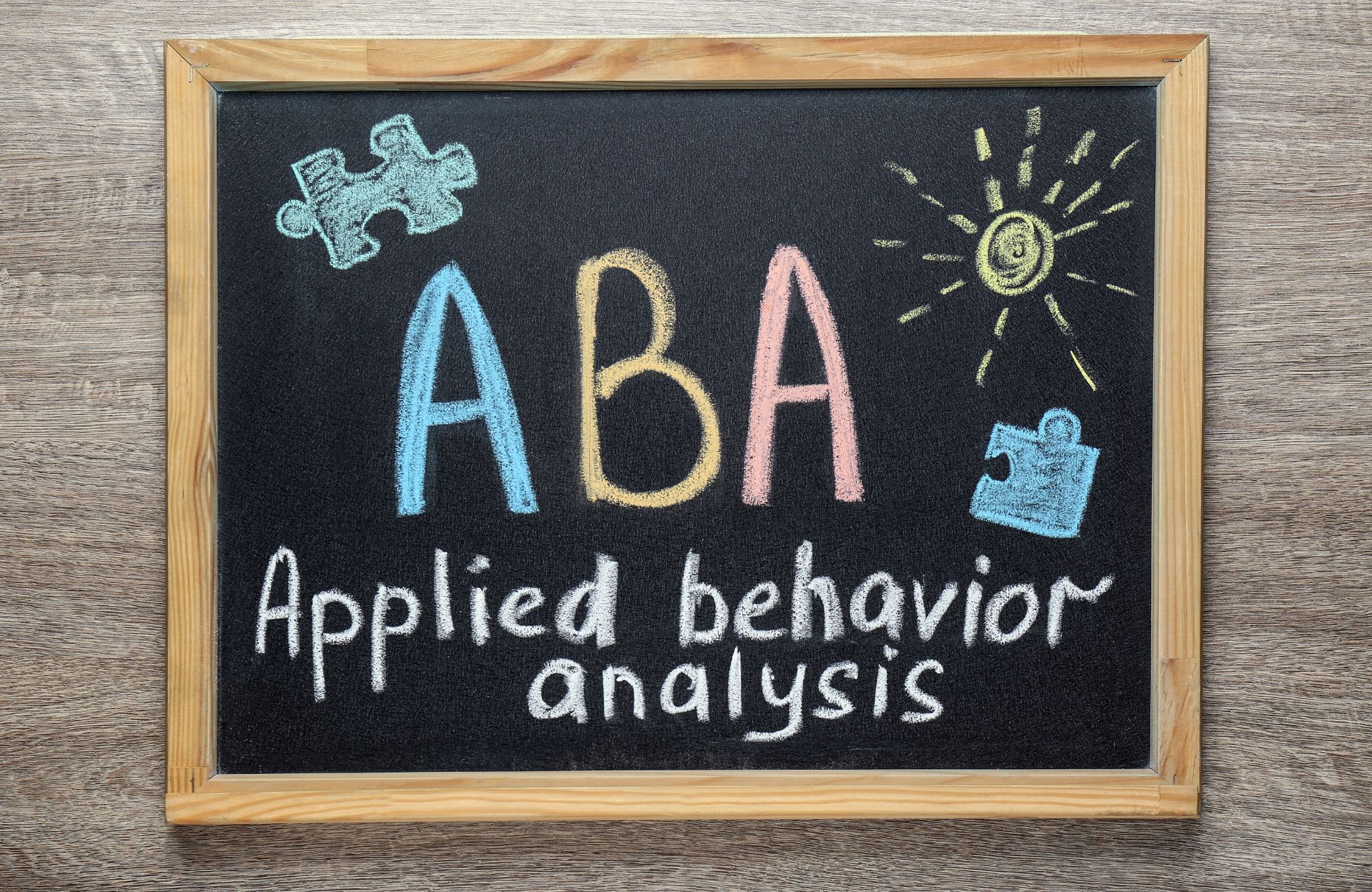Can You Take the RBT Exam Online? Essential 2025 Truth
The path to becoming a Registered Behavior Technician (RBT) represents a crucial first step for anyone pursuing a career in Applied Behavior Analysis (ABA). This certification opens doors to working directly with individuals with autism spectrum disorder and other developmental disabilities under the supervision of Board Certified Behavior Analysts (BCBAs). Let’s dive into the topic: Can You Take the RBT Exam Online?
If you’re researching the RBT certification process, you’re likely wondering about the exam format and available options. The testing landscape for behavior analysis certifications has evolved significantly in recent years, particularly following the pandemic when many testing procedures temporarily shifted to remote testing formats.
Navigating the RBT Exam: Online or In Person?
The RBT exam is a key step towards ABA certification by BACB. This comprehensive assessment evaluates candidates’ understanding of behavior-analytic principles and their application in clinical settings. The examination process has undergone significant changes, with the BACB implementing new testing protocols to enhance security and standardization across all testing locations.
Understanding the RBT Certification
The Registered Behavior Technician credential does more than just look good on a resume – it fundamentally transforms how you’ll be viewed in the field. As Maria Jenkins, a clinical director at a multi-state ABA provider, explained to me: “When I see an RBT certification on an application, I immediately know this candidate has demonstrated a baseline of competency that goes beyond just completing a training program. They’ve proven their knowledge through a standardized assessment process.”
RBTs implement behavior-analytic services under supervision, working directly with clients to carry out behavior reduction and skill acquisition programs designed by Board Certified Behavior Analysts (BCBAs) or Board Certified Assistant Behavior Analysts (BCaBAs). Their role extends beyond simply following instructions – they serve as the eyes and ears of the supervision team, collecting crucial data that informs clinical decision-making.
The value of the RBT credential has grown exponentially over the past five years, with tangible benefits including:
- Higher starting salaries (typically $2-4/hour more than non-certified technicians)
- Prioritized hiring at most established ABA therapy agencies
- Streamlined insurance credentialing
- Clearer advancement pathways toward BCaBA or BCBA certifications
- Increased client confidence in service delivery
For those working with individuals with autism spectrum disorder or developmental disabilities, this credential has become particularly valuable as more states and insurance providers recognize RBTs as qualified service providers in the behavior analysis field.
The Transition from Online to In-Person Testing
The shift to in-person testing wasn’t made lightly. The Behavior Analyst Certification Board (BACB) collected data for nearly two years before making this decision, analyzing test results, security incidents, and certification holder feedback.
During the height of pandemic-era remote testing, concerning patterns emerged. “We noticed statistical anomalies in pass rates during certain periods and from specific geographic regions,” noted a BACB representative at the 2023 Association for Behavior Analysis International conference. These concerns, coupled with direct reports of security violations, pushed the board to reconsider its testing policies.
The transition to exclusively in-person testing at Pearson VUE testing centers was driven by four key factors:
Exam Security
In-person centers implement sophisticated security measures including biometric identity verification, real-time monitoring, and secure testing environments. This dramatically reduces opportunities for prohibited assistance during the RBT exam.
Standardized Testing Environment
Technical Reliability
Anyone who’s experienced an internet outage during a crucial video call can appreciate this benefit. In-person testing eliminates connectivity issues that plagued many remote examinees during their RBT examination.
Credential Integrity
Perhaps most importantly, this change protects the value of the RBT credential itself. When employers or clients see that someone is an RBT, they can have full confidence that the individual genuinely demonstrated the required knowledge in a secured setting.
RBT Exam Eligibility Requirements
Before booking your examination appointment, you’ll need to clear four distinct hurdles established by the Behavior Analyst Certification Board:
Age and Education:
You must be at least 18 years old with a minimum of a high school diploma or equivalent. This requirement is non-negotiable and establishes a baseline maturity level for working with vulnerable populations.
40-Hour Training Program
This isn’t just any training – it must specifically cover the current RBT Task List, which the BACB updates periodically to reflect evolving best practices in the field. The training must be conducted by a qualified BCBA or BCaBA and completed within 180 days. Your training will cover six critical content areas:
- Measurement (collecting accurate data through various methodologies)
- Assessment (conducting preference assessments and assisting with functional assessments)
- Skill Acquisition (implementing teaching procedures like discrete trial training)
- Behavior Reduction (safely implementing interventions)
- Documentation and Reporting (maintaining accurate records)
- Professional Conduct and Scope of Practice (understanding ethical boundaries)
RBT Competency Assessment:
This hands-on evaluation goes beyond theoretical knowledge. A qualified Board Certified Behavior Analyst or BCaBA must directly observe you demonstrating specific skills from the Task List. For many candidates, this proves more challenging than the written exam itself, as it requires practical application of behavior analysis principles.
Background Check:
Given that RBTs often work with vulnerable individuals, a comprehensive criminal background check is required within 180 days of applying. The BACB takes this requirement seriously, with their Ethics Department reviewing any findings to determine eligibility.
What many candidates don’t realize is that these requirements can be completed in various sequences. While most complete training first, followed by the competency assessment, you can undergo your RBT competency assessment at any point, provided your assessor is willing. This flexibility can be a significant advantage if you’re already working in the field and have practical experience.
The RBT Exam Format and Structure
The RBT examination itself consists of 85 multiple-choice questions, though only 75 are scored. The remaining 10 are unidentified pilot questions that the BACB uses to evaluate potential future test items. You’ll have 90 minutes to complete the exam – a timeframe that most candidates find adequate, though time management remains important.
The content distribution across the RBT Task List areas reveals where to focus your study efforts:
- Measurement (12-16%): Questions on various data collection procedures and basic visual analysis
- Assessment (12-16%): Scenarios involving preference assessments and functional assessment procedures
- Skill Acquisition (24-28%): The largest section, covering teaching methodologies and implementation
- Behavior Reduction (20-24%): Questions on intervention implementation and emergency procedures
- Documentation and Reporting (8-12%): Communication protocols and record-keeping requirements
- Professional Conduct (12-16%): Ethical scenarios and scope of practice limitations
What makes this exam particularly challenging isn’t just recalling information but applying behavioral principles to realistic scenarios. You might be presented with a description of a client’s behavior and asked to identify the most appropriate data collection method, or given a teaching scenario and asked to select the correct prompting procedure.
The passing score isn’t a simple percentage. The BACB uses the “modified Angoff method,” where subject matter experts evaluate each question to determine how difficult it would be for a minimally qualified candidate. This sophisticated approach ensures the exam’s difficulty remains consistent over time, even as specific questions change.
Navigating the Registration Process
The path from deciding to become an RBT to sitting for the exam involves several distinct steps:
- Create a BACB Account: This serves as your hub for all certification activities. Make certain your name matches your government ID exactly – even minor discrepancies like using “Bob” instead of “Robert” can prevent you from testing.
- Complete the RBT Certification Application: Through the BACB portal, you’ll need to submit detailed information about your training, competency assessment, and background check. Be meticulous here – errors or omissions will delay your application processing.
- Submit Documentation: Upload all required documentation, ensuring every form is properly completed and signed. The BACB has become increasingly strict about documentation requirements.
- Pay Application Processing Fee: The non-refundable application fee (currently $50) must be paid before your application will be reviewed.
- Receive Authorization to Test (ATT): Upon application approval, you’ll receive an ATT valid for 90 days. This window is firm – if you don’t test within this period, you’ll need to reapply and pay additional fees.
- Schedule with Pearson VUE: Using your authorization ID, you’ll book an examination appointment at a designated testing center. This step requires separate payment of the exam appointment fee (currently $45).
Preparing for the In-Person RBT Exam
Your preparation strategy can make or break your exam success. Beyond simply memorizing terms, you need to develop a deep understanding of behavioral principles and their application.
Essential Study Materials:
- The RBT Task List and Ethics Code (official BACB materials)
- The RBT Handbook with exam specifications
- Commercial study guides (Cooper’s “ABA Visualized” and BehaviorBabe’s RBT study guides consistently receive strong reviews)
- Practice tests that mimic the actual exam format
- Online study groups (platforms like StudyStack offer free RBT flashcard sets)
Effective Study Strategies for Adequate Preparation:
- Create scenarios for each concept (e.g., “How would I take ABC data for a student who hits during transitions?”)
- Use the “teach-back” method – explain concepts to someone unfamiliar with ABA
- Create a study schedule that covers each content area proportional to its exam weight
- Take full-length practice exams under timed conditions to simulate the standardized testing environment
- Form study partnerships where you quiz each other and discuss challenging practice questions
What to Expect on Exam Day
The examination day experience follows a structured protocol designed to ensure exam security and standardization:
Before Arrival:
- Verify your Pearson VUE testing center location and transportation options
- Prepare two forms of valid identification, including one government-issued photo ID
- Get adequate sleep – cramming the night before rarely improves outcomes
- Dress in layers to accommodate varying testing room temperatures
- Plan to arrive 30 minutes before your scheduled appointment
Check-In Process:
- Present your identification documents
- Have your photo taken for the BACB records
- Store all personal belongings in provided lockers (absolutely everything must be stored – even watches and jewelry)
- Submit to security screening, which may include metal detection wands
- At many centers, you’ll undergo palm vein scanning for biometric identification
Testing Environment Details:
- The testing room contains individual computer workstations with privacy dividers
- You’ll be provided with noise-reducing headphones upon request
- Scratch paper and pencils are supplied by the center
- Proctors monitor the room continuously through direct observation and video surveillance
- Temperature and lighting are carefully controlled for optimal testing conditions
While these security measures might seem intimidating, test administrators are generally professional and courteous. Their primary goal is to ensure a fair testing environment for all candidates taking the RBT exam.
After the Exam: Results and Next Steps
The waiting period on the exam process after completing your exam is mercifully short compared to many other professional certifications. Results are typically available within 24-48 hours through your BACB account.
If You Pass:
- Congratulations! You’ll be able to download your official RBT certification immediately
- Secure ongoing supervision from a certified behavior analyst (minimum 2 hours monthly)
- Complete annual renewal requirements, including the RBT Renewal Competency Assessment
- Consider joining professional organizations like ABAI to connect with the broader behavior analysis community
If You Don’t Pass:
- Your score report will include a content area breakdown showing your relative performance
- Use this feedback to target your studying for specific areas
- Remember that many successful RBTs don’t pass on their first attempt
- You can retake the exam after a 7-day waiting period (up to 8 attempts annually)
Conclusion: Can You Take the RBT Exam Online
The journey to becoming a Registered Behavior Technician requires dedication, but the professional opportunities make it worthwhile. The shift from remote testing to in-person examinations at Pearson VUE testing centers has strengthened the RBT credential through enhanced exam security and a standardized testing environment. While this means the RBT exam online is no longer available, successful preparation remains focused on quality study materials, practice tests, and mastering the RBT Task List to achieve a passing score.
When scheduling your examination appointment, consider both the exam appointment fee and availability at designated testing centers, and remember that the RBT Handbook serves as your guide throughout the certification application process. The RBT competency assessment and examination process ultimately ensure that all certified behavior technicians working under Board Certified Behavior Analysts possess the knowledge and skills necessary to implement applied behavior analysis techniques effectively, making this credential increasingly valuable in the field of behavior analysis.
Ready to take the next step in your behavior analysis career? Affinity ABC offers comprehensive RBT training, competency assessments, and exam preparation resources to help you navigate the certification process with confidence. Our experienced BCBAs provide personalized guidance to ensure you’re well-prepared for the in-person examination. Join our compassionate team making a difference for children across New Mexico. Contact us today at (505) 584-2634 or admin@affinityabc.com to learn how we can support your professional journey.
FAQs: Can You Take the RBT Exam Online
How do I take the RBT exam?
The RBT exam is now administered exclusively in-person at Pearson VUE testing centers. After completing all eligibility requirements, apply through the BACB website, receive authorization, and schedule your exam appointment at a designated testing center.
Can you do RBT competency assessment online?
Yes, the RBT competency assessment can be conducted either in-person or remotely, according to current BACB guidelines. The assessor must be a qualified BCBA or BCaBA who directly observes you demonstrating the required skills.
How many questions can I miss on the RBT exam?
The BACB doesn’t publish the exact number of questions you can miss while still passing. The exam uses a criterion-referenced standard rather than a fixed percentage. Focus on thorough preparation rather than calculating minimum passing scores.
What is a passing score on the RBT exam?
The BACB uses the modified Angoff method to determine passing scores based on question difficulty. Results are reported only as “pass” or “fail” without numerical scores to maintain test security and integrity.









